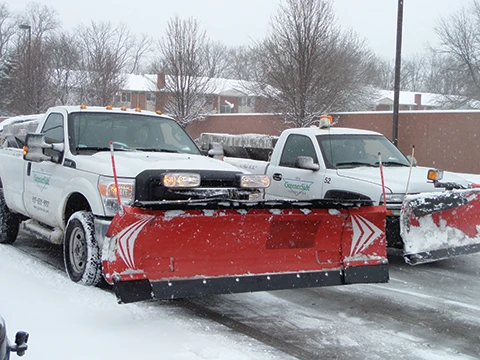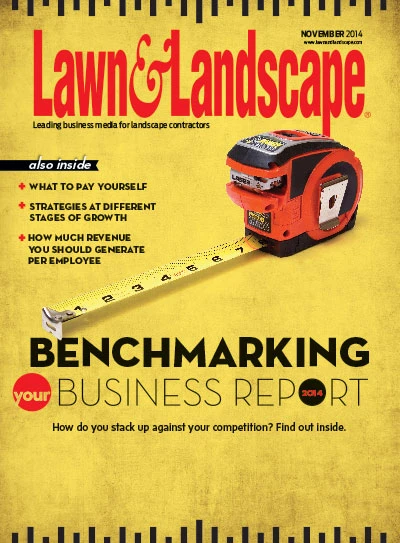
 Like many lawn care professionals, Wayne Michalak entered the lawn care industry when he started mowing lawns at age 14. Several years after running Wayne’s Lawn Service out of his parents’ house, he incorporated The Greener Side in 1993 with dreams of becoming the next TruGreen.
Like many lawn care professionals, Wayne Michalak entered the lawn care industry when he started mowing lawns at age 14. Several years after running Wayne’s Lawn Service out of his parents’ house, he incorporated The Greener Side in 1993 with dreams of becoming the next TruGreen.
“We wanted to dominate the fertilization market,” says Michalak, president of The Greener Side, located in Inkster, Mich. “We bought out three or four companies during a five-year period and tried to focus on fertilization and commercial maintenance.”
If customers needed a fallen tree removed on a Sunday, Michalak’s team was responsive and prompt. So much so, in fact, that customers began asking for services beyond the scope of summer work. Within a couple of years, customers were asking for snow and ice removal.
“We bought a plow truck and just started plowing a couple of locations,” Michalak says. “It was a horrible route. We drove a half-hour to get to one location, and we didn’t know anything about salting. It really didn’t look like much at the time, and it really didn’t snow much, either, those first couple of years. We probably grossed $1,000 our first year plowing snow. It was pretty painful.” Despite the rocky start, the company's summer and winter work grew one another.
“We started doing work for commercial properties and they wanted us to then do their winter work,” Michalak says. “As we acquired more summer work, we got more winter work. We’d have five trucks fertilizing and mowing in the summer, and those same five trucks would then, in turn, do snow.”
Transition toward snow.
The Greener Side’s diversification into snow proved critically valuable when summer growth slowed. That’s when two key events shifted the balance of the company’s services for good.
First, TruGreen made an offer to buy The Greener Side’s fertilization business in the mid-2000s. The transaction wasn’t quite in line with Michalak’s original goal to become TruGreen, but he couldn’t refuse the offer and he sold the division.
Around the same time, a couple of other national service providers won some of The Greener Side’s largest accounts, denting its summer portfolio.
“It knocked us down to the ground in terms of summer work,” Michalak says. “In the background we always had snow, though, and we were making money at it. That’s where we were in the moment of change.”
Facing difficult competition and dwindling numbers during the summer, Michalak decided to focus on growing the fledgling snow business.
“Our snow operation at the time was nothing; the model wasn’t near what it is today,” Michalak says. “We were using the philosophy of ‘What you have is what you use. You don’t rent anything; you don’t sub anything out.’”
As the company made the transition toward snow, it began developing its commercial snow and ice management skills and strategies. Michalak turned to industry associations to learn from the experience, advice and training resources of seasoned professionals.
“The best lesson for other companies would be to get involved with professional organizations to learn the business,” he says.
Specifically, at one event, Michalak met a representative from Tovar Snow Professionals and asked how the company owned and managed enough trucks to run a several million dollar snow business.
The person explained that Tovar doesn’t own all of its trucks. Instead, it utilizes subcontractors. That insight sparked an “a-ha moment” for Michalak as he bolstered The Greener Side for winter growth.
Now, 95 percent of the company’s business is generated during the winter, and the team grows from 20 employees in the summer to about 80 during Michigan’s cold months. The Greener Side partners with subcontractors, and also subcontracts itself through other national service providers, to increase business while maintaining a low overhead.
In a typical season, the company operates between 20 and 24 snow trucks – which are often bought used – and subs or rents out another 30, managing every job in-house.
The company completed $3 million of snow and ice work during the last season.
Remaining diversified.
But despite its snow success, The Greener Side doesn’t focus entirely on snow.
“I doubt I would ever commit to 100 percent snow,” Michalak says. “Say you’ve got some commercial clients that really want you to do shrub-trimming, mulching and mowing for them; while it might not be as lucrative as the snow, I’m not going to turn that off.”
This year, the company diversified back into summer work, launching a new division through SmallMowersOnly.com. It’s a pet project focused only on mowing small residential lawns.
“A lot of the competition is pulling up in a big truck and trailer with zero-turn riding mowers and $100,000 worth of equipment,” he says.
“We sensed that customers weren’t wanting big mowers on their lawn, so we show up with a relatively small push-mower.”
The business is growing, but most importantly, it’s diversifying The Greener Side’s commercial winter business into the residential summer market. Michalak has learned that balance is the key to running a stable, sustainable snow enterprise.
“It seemed like a good opportunity to keep the name around in this community and keep guys around for the winter to bolster up the summer,” Michalak says.
“In a no-snow or low-snow year, you’ve got to have something to fall back on.”

Explore the November 2014 Issue
Check out more from this issue and find your next story to read.
Latest from Lawn & Landscape
- Aphix acquires Curb Appeal Landscaping in Birmingham
- Project EverGreen helps revitalize Milan Park in Detroit
- Trex Company wins Product of the Year, Judges’ Choice Winner at Environment+Energy Leader Awards
- General Equipment & Supplies in Fargo adds Takeuchi equipment
- Mariani Premier Group acquires Hazeltine Nurseries
- EnP Investments adds Mark McCarel as Northeast territory sales manager
- Our April issue is now live
- Ready or not







